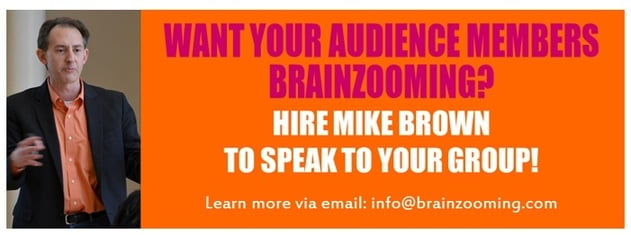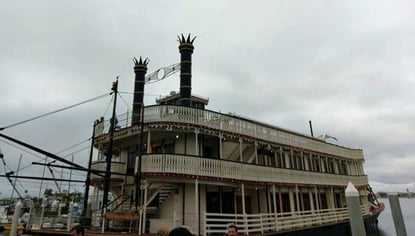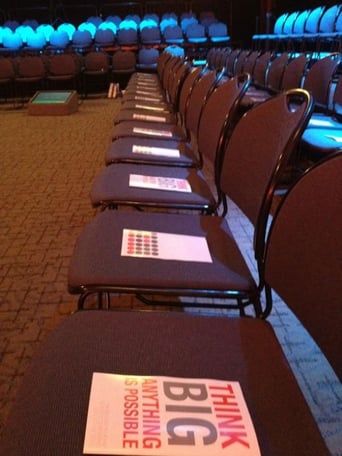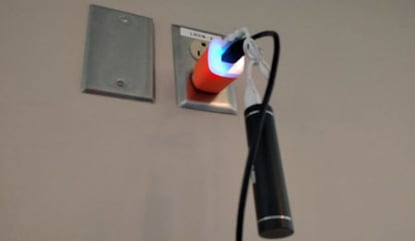The Hubspot Inbound conference is coming up at the end of September. Based on last year's attendance at the Hubspot Inbound conference, I'm guessing there may be 20,000 or more people this year. That's more people than where I grew up in Hays, KS. That's why I call Inbound, and other conferences drawing tens of thousands of people, small-town business conferences. At those sizes, conference organizers are essentially creating a small town, focused on education, sales, marketing, networking, entertainment, recreation, and a variety of other activities concentrated into several days.
Developing a Small-Town Business Conference Plan
While an event of this size poses massive logistical and infrastructure challenges for organizers, it also provides opportunities and challenges for attendees who want to maximize their experiences. The typical rules do not apply at a small-town business conference. Here are strategies to maximize learning and impact from an event of this magnitude.
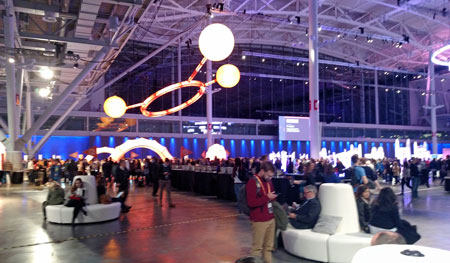
Do Homework and Scope Out the Business Conference Location
You would not move to a new town without learning about it first. The same holds for a small-town conference. As soon as possible, find out the titles, descriptions, speakers, and locations for all educational and learning opportunities. Prioritize where you think you’ll get the best learning, categorizing all the possibilities as “Must Attend,” “Good to Attend,” “Interesting,” and “Don’t Attend.” This lets you quickly narrow your top potential sessions. On the second pass, their proximity to each other and meetings you want to have can help you decide what your first choices are. Keep this list handy onsite in case something is canceled or a session proves not to be valuable.
Once you’re onsite, take advantage of early downtime and walk the conference center and other venues. How close are they? How quickly will you have to navigate the event (and the crowds) to get to all the sessions you want to attend? Are there certain seating spots that are better than others and more conducive to your learning style? For example, are you a handwritten note taker, tablet user, or something else – where having or not having a table to work on could make a difference?
Travel Light and Stay Highly Mobile
The sheer size of this type of business conference demands they be spread over a footprint equal to many city blocks. That means good mobility is an important asset to getting the most out of the business conference. Only you know what maximizes your own mobility, but these tips will likely help:
- Travel with as few things as possible
Many people want to have many things with them, including a backpack, briefcase, or purse. The more stuff you have with you, the more cumbersome it is to both get around and to find places to sit or stand at sessions. Pare down what you actually bring to the conference to only the essentials. - Stay as close as possible to the conference center
This helps you avoid waiting for the conference bus/transportation system. You can also much more easily bounce back and forth to your room for calls or catching up on work. - Position yourself to move quickly
Part of this is scoping out the venue and knowing short cuts, back ways, and pathways most people never go. Sit in sessions near open doors so you can get out before the crowd starts moving. This might seem a bit obsessive, but the less time you can spend waiting, the more time you have for networking (although you can use the time spent waiting in lines as networking opportunities, too). - Move up and fill all available space
This advice comes from a sign at Disneyworld years ago. Crowds often bog down and move slowly. If there are open spaces, test your ability and the cultural willingness for moving along the side of the crowd to improve your position in line. - Take care of your feet and legs
Make sure you have great walking shoes that allow you to move quickly and deliver maximum comfort. Compression socks can provide extra comfort when you are on your feet, on the move, and easily clocking eight or nine thousand steps simply moving between sessions.
Shift Where, When, and How You Do Things
To avoid lines and unnecessary waiting, shift where, when, and how you do things throughout the event. Knowing where everything is, when things are available, and having inventive ways to accomplish them are all valuable. Using all these to put you just slightly off routine with the crowd allows you to get so much more done.
- Create teams and assign tasks
Coordinate with co-workers or friends (including friends you’ve just made at the event) to split up roles. Send one person to grab food and another to get drinks when lines are long. Split up sessions and pool your notes. - Know where the infrastructure is and use it earlier
Avoid waiting in lines unnecessarily by arriving early. Swing by breakfast, lunch, and dinner venues as early as possible before crowds arrive. Pick things you can eat while you move since you are traveling light with free hands. Visit the power outlets and charging stations that are off the beaten path to keep phones and tablets going all day.
What to do with all your time?
With the extra time these tips provide, you can maximize networking, staying up on the work you need to do, and maybe even look around the city in which your small-town business conference is located! - Mike Brown

